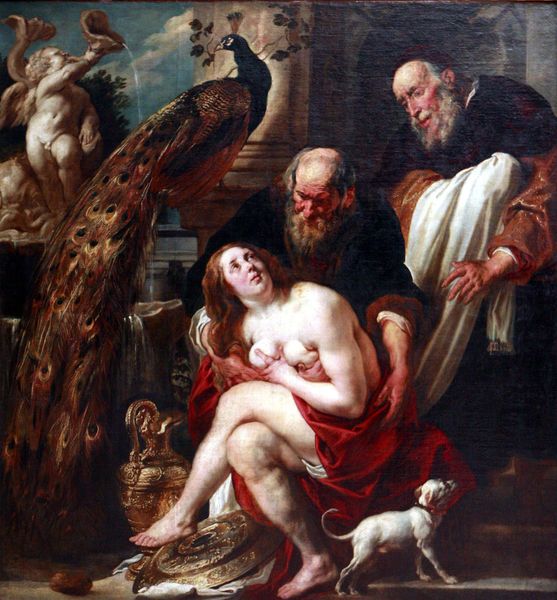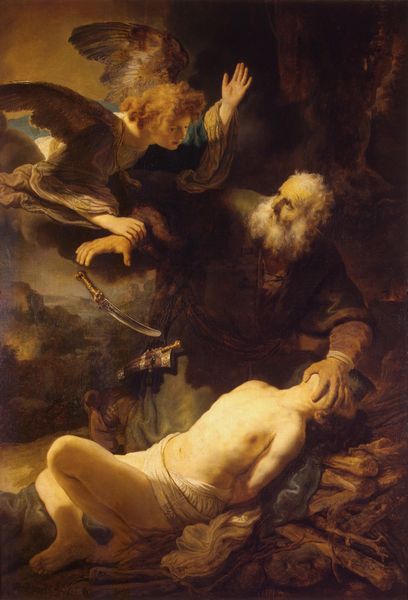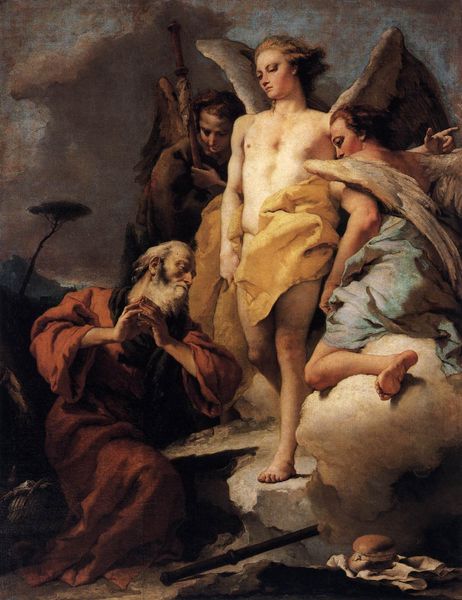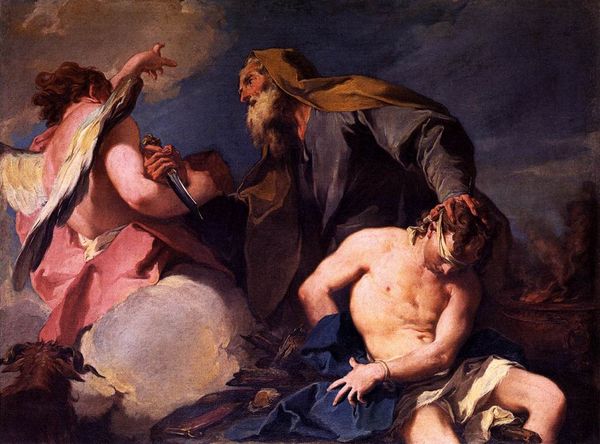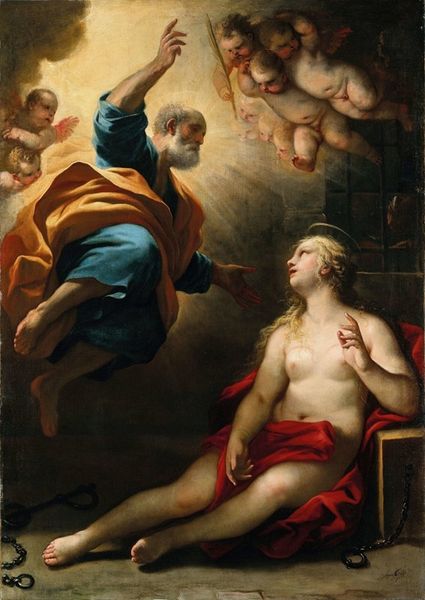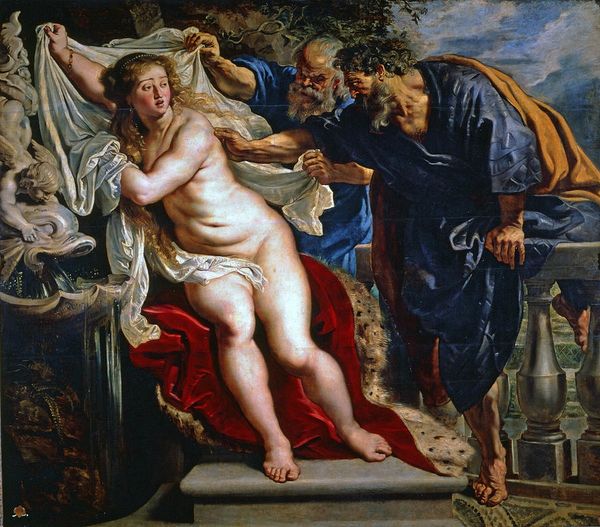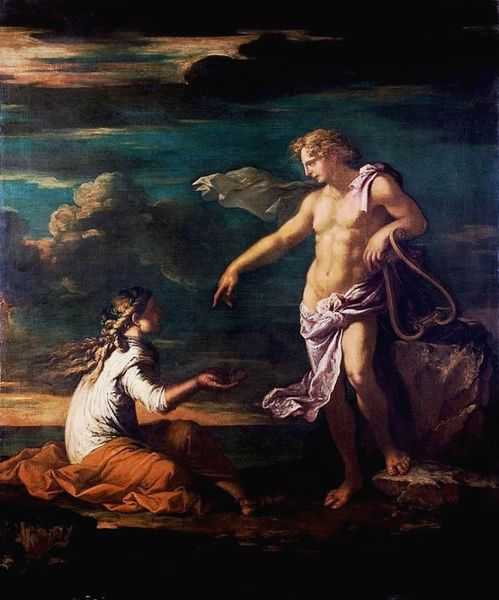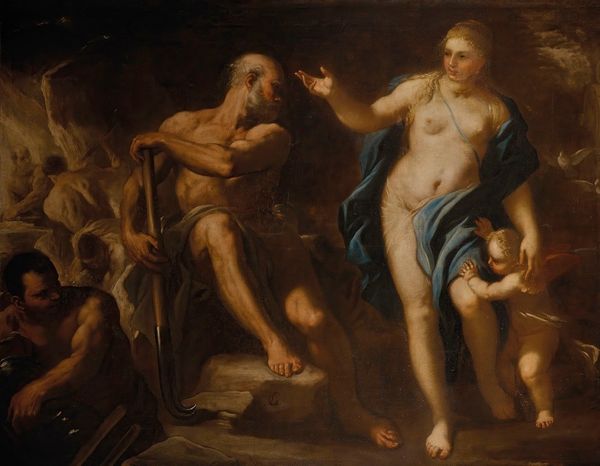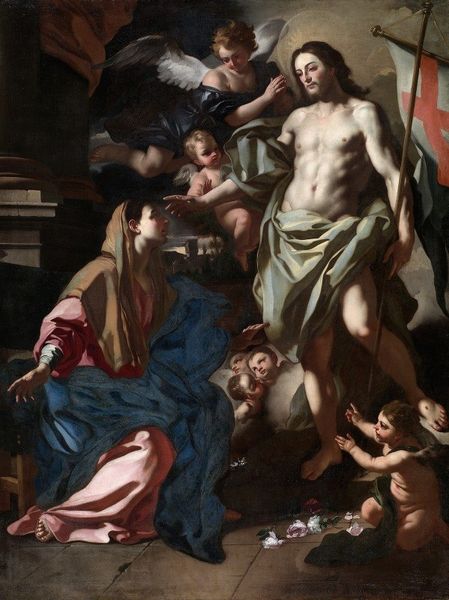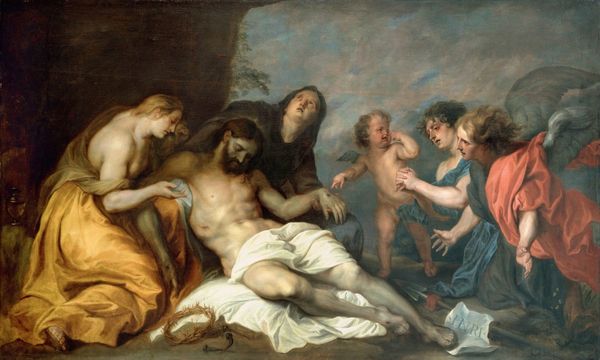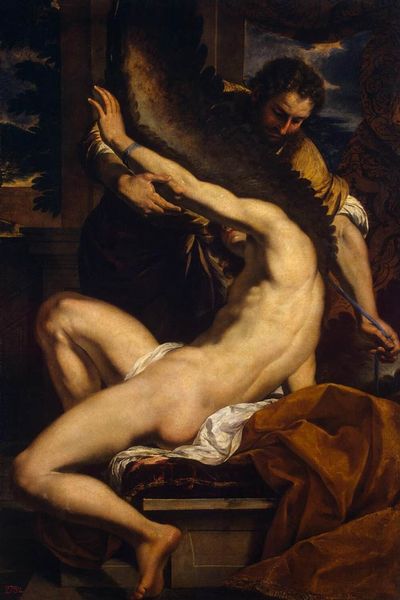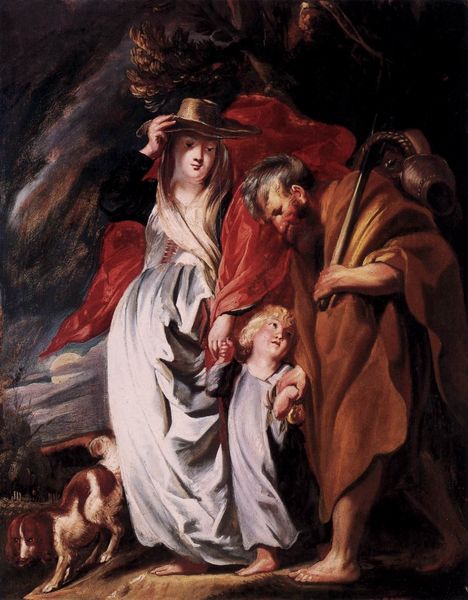
painting, oil-paint
#
portrait
#
narrative-art
#
baroque
#
painting
#
oil-paint
#
figuration
#
oil painting
#
history-painting
Copyright: Public Domain: Artvee
Editor: Here we have Jacob Jordaens' "The Sacrifice of Isaac" from 1625, an oil painting that depicts a pretty intense biblical scene. I'm struck by the almost theatrical drama of it all. The angel bursting in, Abraham poised with the knife...it's a real moment of crisis. What do you see in this piece? Curator: I see a reflection of the patriarchal structures embedded within religious narratives and how those narratives continue to shape our understanding of power and obedience. Think about the inherent power imbalance and the unquestioning loyalty demanded of Isaac. Jordaens, working in the Baroque style, certainly emphasizes the drama, but how does that heightened emotion serve to reinforce or perhaps even question the narrative's ideological underpinnings? Editor: So, it's not just a depiction of a dramatic moment, but a commentary on power dynamics? Curator: Precisely. Consider also the role of the angel, often interpreted as divine intervention, but what if we analyze it through the lens of external forces disrupting individual agency? Does the angel truly liberate Isaac, or simply redirect Abraham's obedience to a different authority? And, even more provocatively, how has this shaped modern discussions around blind faith versus critical thinking? Editor: That makes me think about how often these kinds of biblical scenes are portrayed without really unpacking the implications of such immense patriarchal power and, almost, sanctioned violence. It seems like we should examine these artworks through a different, more critical lens. Curator: Exactly. By applying intersectional lenses – looking at gender, power, and social structures - we can engage with these works in a much more meaningful way, not just as aesthetic objects but as cultural artifacts that reveal so much about societal values across time. It changes our dialogue with art, doesn’t it? Editor: It really does. Thanks for helping me see this classic scene from a whole new perspective. Curator: My pleasure! I have learned from your view, too. It is imperative that these dialogues on how we perceive art should always be dynamic and engaging.
Comments
No comments
Be the first to comment and join the conversation on the ultimate creative platform.
